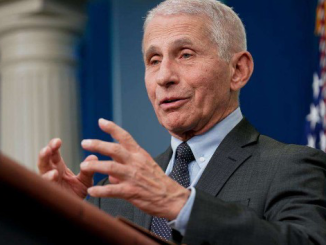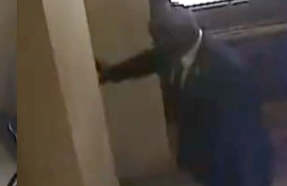
The Wuhan Institute of Virology had an agreement with the University of Texas Medical Branch’s Galveston National Laboratory to collaborate on scientific research, with the Chinese lab entitled to ask the Texas lab to “destroy” any “secret files.”
The revelation provides further details about how the Chinese government lab, which at least one U.S. intelligence agency regards as the most likely origin of the coronavirus pandemic, maintained relationships with U.S. government-funded institutions as it conducted its coronavirus research.
U.S. Right to Know obtained and published the late 2017 memorandum of understanding this week.
“All cooperation and exchanges documents, data, details, and materials shall be treated as confidential information by the parties,” the agreement said. “The confidentiality obligation shall be applicable throughout the duration of this MoU and after it has been terminated. The party is entitled to ask the other to destroy and/or return the secret files, materials, and equipment without any backups.”
It was signed by UTMB “coordinator” James LeDuc and WIV “coordinator” Zhiming Yuan.
“The Galveston National Laboratory is a national biocontainment laboratory built at the University of Texas Medical Branch by the National Institutes of Health and the State of Texas to help combat global health threats,” Christopher Smith Gonzalez, director of media relations at UTMB, told the Washington Examiner. “As a government-funded entity, UTMB complies with all applicable public information law obligations, including the preservation of all documentation of its research and findings.”
The university said it does not plan to renew the agreement with the WIV when the agreement expires at the end of 2022.
LeDuc, director of the GNL, and Yuan, director of the WIV, penned a joint opinion piece for Science in October 2018 titled, “Network for safe and secure labs.”
“These labs handle the world’s most dangerous pathogens known, and there must be safeguards to prevent theft or misuse. At the same time, security must be balanced against mechanisms that support collaboration, including specimen sharing,” the duo wrote. “In preparation for the opening of the new China maximum biocontainment laboratory, we engaged in short-term and long-term personnel exchanges focused on biosafety training, building operations and maintenance, and collaborative scientific investigations in biocontainment. We succeeded in transferring proven best practices to the new Wuhan facility.”
UTMB released a statement in April 2020 saying the Galveston National Laboratory “has hosted Chinese scientists for training to work in the high-containment lab” and that its lab “is part of National Institute of Allergy and Infectious Diseases Biodefense Laboratory Network.”
State Department cables from 2018 that were revealed in April 2020 warned of biosafety and management problems at the Wuhan lab and noted WIV officials said UTMB had trained lab technicians working there.
The Trump Education Department sent UTMB a letter in April 2020 noting the Galveston National Laboratory had “substantial contractual relations” with the Wuhan lab. The Education Department asked for “all records” related to the Wuhan lab, the Chinese Academy of Sciences, or “bat lady” Shi Zhengli.
The Education Department said in November 2020 it was concluding its investigation, adding that the lab’s activities “warrant continued heightened vigilance.”
“Accidents happen,” LeDuc said in April 2020. “You do your best to prevent it, and you prepare for an eventuality if it should happen. So all I can say is [the Wuhan lab] was built comparable to ours, with a whole series of redundant safety measures in place. … But it would be foolish to say there’s no risk because there’s risk in everything.”
“I can say that this was a brand-new laboratory that was working at a level of biocontainment that they had not worked at in the past, so it’s not surprising that they don’t have a whole lot of people with experience in it,” LeDuc added. “It’s all speculation that the lab was involved and I think it’s very appropriate that people look into this because that’s where some of the work is done, but the timeline doesn’t make sense.”
Yuan told Chinese state television at the time that “there is absolutely no way that the virus originated from our institute.”
Scientists consulting with the U.S. government early in the pandemic believed COVID-19 originating from a lab in Wuhan was possible or even likely, but Dr. Anthony Fauci worked to shut the hypothesis down.
The Office of the Director of National Intelligence released an assessment last summer saying that one U.S. intelligence agency assessed with “moderate confidence” that COVID-19 most likely emerged from a lab in Wuhan.
* story by The Washington Examiner


